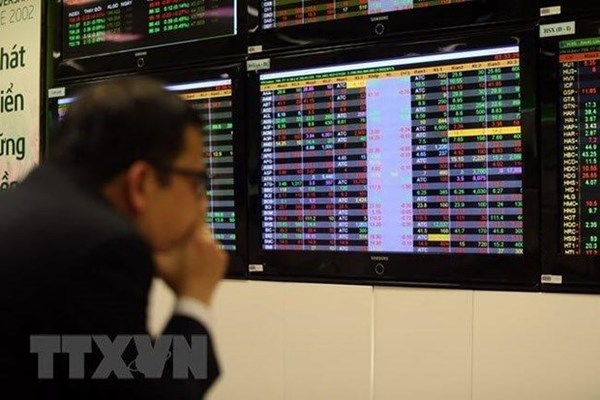 |
The market is forecast to move sideways with alternative ups and downs in a narrow range next week. |
The benchmark VN-Index on the Ho Chi Minh Stock Exchange slid 0.06 percent toclose at 989.20 points, totalling a weekly loss of 0.27 percent.
On the Hanoi StockExchange, the HNX-Index edged down 0.55 percent to end Friday at 105.48 points.The index had risen 0.21 percent on a weekly basis.
An average of 213.9million shares was traded on the two exchanges last week, worth 4.3 trillionVND (183 million USD).
According to Ngo Quoc Hung, senior analyst at MB Securities Co's marketstrategy department, thinking positively, the Vietnamese market will keep itsupward trend with slight fluctuations.
“Liquidity may remain below VNĐ3 trillion on the HOSE,” Hung told newssite tinnhanhchungkhoan.vn.
Listed companies were publishing their third quarter earnings reports, whichcould lead to a divergence among stock. Foreign investors had reduced their netselling and switched to net buying in the past week, Hung said.
He said: “Technically, the VN-Index is in the accumulation stage so the indexmay fluctuate in a narrow range before a clearer trend appears.”
Global economic growthwas slackened due to trade conflicts, instability around the Brexit agreementand uncertainties of trade policies, Hung said.
Last week, theInternational Monetary Fund (IMF) lowered its forecast for world economicgrowth in 2019 to 3 percent. Therefore, central banks around the world continueto lower interest rates, he said.
On the stock market,whenever economic data deteriorated, investors tend to expect central banks tocut interest rates further to prevent worse economic downturn. Therefore,whenever interest rates are cut, the stock markets go up, Hung said.
“In general, the main trend of the market in October is fluctuating in a narrowrange. VN-Index is in the "sideway" phase, which is usually the mosttime consuming period in the financial market,” said Nguyen Anh Khoa, head ofMarket Analysis and Investment Advisory at Agribank Securities Co (Agriseco).
The market might still keep following this path for a while and wait for a changethat could draw a new trend for stocks.
“In recent months, theVietnamese stock market had not been affected much by the developments ofinternational fluctuations,” Khoa said.
According to Phan Dung Khanh, director of investment consultancy at Maybank KimEng Securities, the market remained short on cash flow. Foreign investors keptnet selling, so large-cap stocks and major sectors were not supported and couldnot maintain the upward momentum.
“Therefore, it is difficult to have a positive upward trend in the nearfuture,” Khanh said.
“However, the VN-Index still has the ability to conquer the 1,000-pointlandmark but the index may find it difficult to maintain this level,” he said.
The National Bureau of Statistics of China (NBS) on October 18 said in thethird quarter of 2019, the country's economy grew by 6 percent, the lowestlevel since March 1992. The Chinese economy continues to decelerate sharplyunder the pressure of the trade war with the US.
According to Bao VietSecuties Company (BVSC), the record low growth rate shows the prolongedrecession and the US-China trade war have seriously affected the production andexports of the world's second largest economy.
Beijing has set a target of 6-6.5 percent for 2019 economic growth. With theslowdown, the Chinese economy is likely to reach the lower end of the targetrange. Beijing has boosted its support for the economy with tax cut, interestrates reduction and foreign investment restrictions on the stock market.
In the latest measure tosupport growth, the People's Bank of China (PBOC) on October 16 said itinjected 200 billion yuan (28 billion USD) into the financial system through amedium-term lending mechanism for banks, in order to maintain liquidity in themarket.
However, experts believe these efforts were not enough to compensate for thedecline in domestic demand, BVSC said./.VNA
 The market is forecast to move sideways with alternative ups and downs in a narrow range next week, analysts have predicted.
The market is forecast to move sideways with alternative ups and downs in a narrow range next week, analysts have predicted.